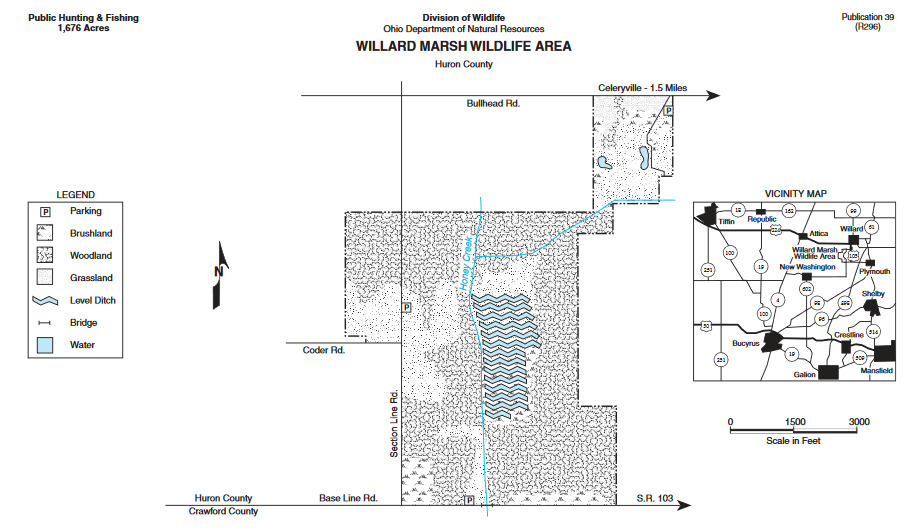Willard Marsh Wildlife Area
Willard Marsh Wildlife Area
Willard, Ohio 44890
Official WebsiteWillard Marsh Wildlife Area map
Also, see all the hotspots at:
Huron County Birding Drive
About this Location
This 1,676-acre wildlife area lies in the muck farming region of north central Ohio, four miles southwest of the city of Willard. Section Line Road provides access to the area from US-224, three miles west of Willard. The area may also be reached by driving west of Bullhead Road from its junction with US-224 and continuing 1.5 miles past the village of Celeryville.
Willard Marsh Wildlife Area is quite flat, with little natural drainage. Approximately two-thirds of the area is woodland; the remainder is divided about equally between open land and brushland.
Almost 13,000 acres of ancient bogland once surrounded the site of Willard Marsh Wildlife Area. During the last glaciation, some 25,000 years ago, a large, shallow lake was formed. This lake was originally a finger of glacial Lake Erie. As the rich, shallow-water vegetation decayed, plant material gradually filled the huge lake bed, and northern bog plants such as sphagnum moss, cranberry, blueberry, royal, and cinnamon ferns, and various sedges became established.
The gradual accumulation of bog vegetation resulted in deposits of peat which in some places reached a depth of 15 feet or more. This area was known locally as the “New Haven Marsh” or the “Huron Bog.” Fires have repeatedly burned over many parts of the bogland, and even today are a constant menace during the summer and fall. Most of the original bog has long since been drained for agriculture. In 1942 the Division of Wildlife purchased almost 1,500 acres for a public hunting area, and later obtained additional acreage to bring the total to 1,676 acres.
The present management of the wildlife area includes annual maintenance of open areas and sharecropping agreements with local farmers to aid in controlling plant succession and providing wildlife foods. Fourteen level ditches have been constructed for waterfowl production.
The brushy areas at Willard Marsh provide excellent cover for a substantial number of deer. Moderate numbers of rabbits, quail, pheasants, and fox squirrels can be found here, and furbearers are common. Because of its unique geological history, Willard Marsh may be most valuable in terms of nongame species.
Features
Roadside viewing
Restrooms on site
Entrance fee
Content from Official Website
